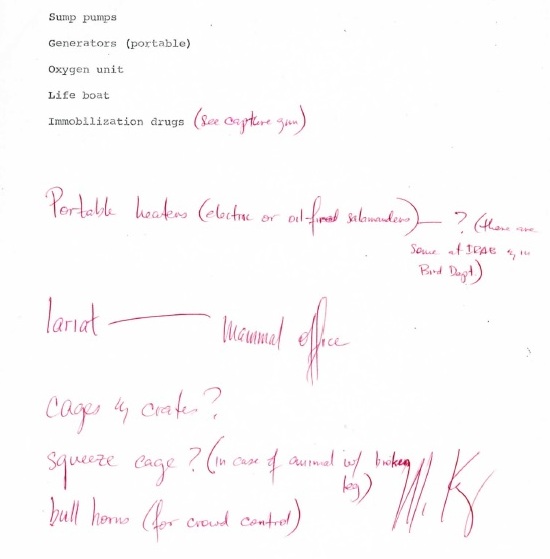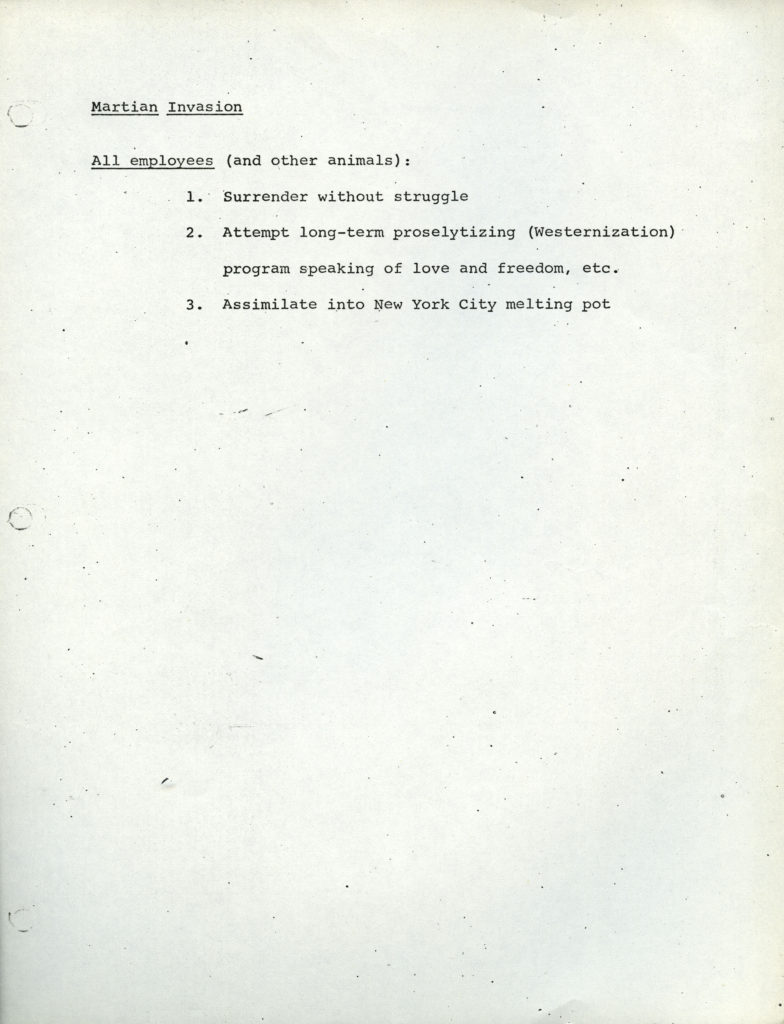The Bronx Zoo, like many public facilities, has long had internal protocols for both standard operating procedures and emergency operating procedures [EOPs]. In the early 1970s, the Bronx Zoo’s newly-revitalized Safety Committee conducted a series of revisions of the Zoo’s Emergency Procedures Manual. The revision process included gathering and codifying types of emergencies, ideal responses, and needed equipment from a wide variety of departments.

Detail of the reply from Herpetology Department Curator Wayne King to a May 1972 request from the Safety Committee for additions to the emergency equipment list. Scanned from WCS Collection 2010/Safety Committee.
Records from the Safety Committee in those years include correspondence between the Committee and departments relating to animal care, guest services, facilities operations and maintenance, and more. They also include drafts of the manual, notably one from 1971-1972 and one from 1974. These draft manuals include procedures for:
- Several emergencies that might occur at any large public facility (e.g. lost children, visitor injuries and illnesses, severe storms, fires, heating/plumbing/electricity failures, and so on)
- Some that are specific to institutions, like zoos and aquaria, that care for living collections (e.g. animal escapes, interruptions in animal food supplies, visitors harassing zoo animals, and attacks on zoo animals by feral/stray domestic animals)
- A few that are rooted in the tumults of the late 1960s/early 1970s environment of Cold War nuclear fears, anti-Vietnam War protests, and general cultural unrest (e.g. air raids, bombings, riots, and other civil disturbances)
(Another EOP page that’s definitely a product of its times regards what to do in the event of a park-wide telephone failure—not so much of an issue now that nearly everyone has cell phones.)
One interesting EOP included protocols for venomous snake bites that occurred outside of the Zoo. In those days, the Zoo often fielded telephone calls from hospitals that were treating snake bites and lacked expertise in snake identification and anti-venin matching. In these cases, the Zoo’s Reptile Department would get the description of the snake from the hospitals and send them doses of the correct anti-venin via the police.
As might be imagined, the manuals included scores of EOPs and variations (for example, separate procedures for if a heating failure occurred at a guest service building like a cafeteria, an animal exhibit, a non-exhibit animal facility, or a non-public staff building). Also, given the era of counterculture influences, the brand-new space age, and the threat of global nuclear annihilation, people may have been inclined to prepare for all sorts of out-there events. All of this is to say that I am not sure if—and there are no records indicating whether—the following EOP, included as the last page of the 1974 draft manual, was meant to be taken seriously as the proper response to a potential threat or was meant as a test to see if reviewers of the draft had read all the way to the end:


An administration with a sense of humor! Way to go, BZ!